Read Time: 5 Minutes Subscribe & Share
Muscovado Revelation
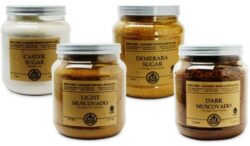 One of the first posts I wrote about Superior Sources in the US extolled the merits of the different Muscovado sugars sold by India Tree. We could hardly keep them in stock, and we had a few customers who special ordered them in 16 lb containers. I became one of them once I started baking with it. A proviso: if you purchase untreated muscovado sugar, remove it from its packaging, transfer it to an air-tight container and put a damp cloth over the sugar to keep it humid, or it becomes dry and really almost as hard as a rock. It’s the not-so-secret ingredient in my chocolate chip cookie recipe, and probably any chocolate dessert I make. Unfortunately, those 16lb containers are not in my 109 boxes in a warehouse in Milan.
One of the first posts I wrote about Superior Sources in the US extolled the merits of the different Muscovado sugars sold by India Tree. We could hardly keep them in stock, and we had a few customers who special ordered them in 16 lb containers. I became one of them once I started baking with it. A proviso: if you purchase untreated muscovado sugar, remove it from its packaging, transfer it to an air-tight container and put a damp cloth over the sugar to keep it humid, or it becomes dry and really almost as hard as a rock. It’s the not-so-secret ingredient in my chocolate chip cookie recipe, and probably any chocolate dessert I make. Unfortunately, those 16lb containers are not in my 109 boxes in a warehouse in Milan.
In Bologna, there is no access to India Tree products. Happily, the remarkable Drogheria Dalla Pioggia (on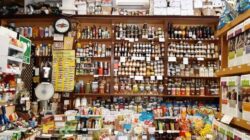 the corner of Via de Falegnami and Via Galliera, so mark it in your itinerary when you visit) has introduced me to the Muscovado sugars from Tate & Lyle. Should you visit my adopted city, it is a retail gem. No website, tiny floorspace and shelves stocked to the ceilings (accessible by a ladder) with everything from vanilla beans to toothpaste. And three very quiet and kind men behind an L shaped counter that’s also stuffed with a variety of comestibles and household cleaners. There’s no room for personal greeters.
the corner of Via de Falegnami and Via Galliera, so mark it in your itinerary when you visit) has introduced me to the Muscovado sugars from Tate & Lyle. Should you visit my adopted city, it is a retail gem. No website, tiny floorspace and shelves stocked to the ceilings (accessible by a ladder) with everything from vanilla beans to toothpaste. And three very quiet and kind men behind an L shaped counter that’s also stuffed with a variety of comestibles and household cleaners. There’s no room for personal greeters.
Little Known Facts
We normally use two sources of sugar in our cooking – cane and beet. While Europe is the leading producer of beet sugar, 80% of the sugar used worldwide is from cane. When we buy light brown and dark brown sugar, that product is bleached granulated sugar with 3.5% of a low-grade molasses added in for the “light” version and 6,5% of same for the “dark” version. An interesting side note is that dark brown sugar is more acidic (it also has more moisture than light brown sugar, but it’s a negligible amount). So if your recipe calls for baking powder, a dark brown sugar cookie will rise slightly higher than a light brown sugar cookie, according to Serious Eats columnist J. Kenji Lopez-Alt. Using brown sugar will yield a chewier texture. Although I have never tried it, he also writes that if you add a tablespoon of molasses to a cup of white sugar, and whirl it in a food processor, you will get brown sugar.
For me, the seduction of using Muscovado sugar (both light and dark) is the richness of flavor, the coffee tone it gives chocolate, the nutty toffee hints it gives an apple pie, the intense flavor (without the cloying sweetness) that is created when you use it to make a caramel sauce. I have used both the dark and light muscovado sugars to make the caramel sauce in the Pastry Queen Pumpkin Roll and the dark Muscovado version is almost chocolate-like in flavor.
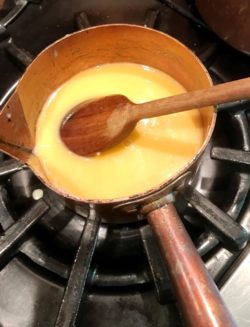 And while we are talking about caramelizing sugar, this is a good time to bring up the purpose of those French copper syrup pans we used to sell in the shop. They actually make the finicky process of caramelizing sugar so easy. No brushing down the sides of the pan with a pastry brush to keep recrystallization from occurring. No development of hot spots that will produce a burnt taste. Truly easy, peasy in an unlined copper pan.
And while we are talking about caramelizing sugar, this is a good time to bring up the purpose of those French copper syrup pans we used to sell in the shop. They actually make the finicky process of caramelizing sugar so easy. No brushing down the sides of the pan with a pastry brush to keep recrystallization from occurring. No development of hot spots that will produce a burnt taste. Truly easy, peasy in an unlined copper pan.
Muscovado sugars always from cane. They retain a certain degree of the original molasses that is removed from bleached white sugar. And actually, Muscovado sugars have greater nutritional value than white refined sugar, should you need an additional reason to explore this rich-in-flavor and texture sweetener. Not knocking honey and agave, but they’re both poor competitors to Muscovado.
What’s In A Name
Dark and Light Muscovado sugars are simply the cane sugar realized from crystalizing cane juice and leaving in a percentage of the molasses – up to 15% in Dark Muscovado, and about 8% in Light Muscovado (in comparison to 6.5% and 3.5% in brown sugar) Sometimes the dark version is called Barbados Sugar. A note should be added that Tate & Lyle produce their Muscovado sugars sifted with a small amount of cornstarch, which keeps them from becoming rock hard.
Demerara Sugar is a Muscovado sugar that has a larger crystal and less molasses than the two described above. It is dryer and crunchier. It really is the best sugar for finishing a Crème Brulée – I became a believer after trying them all.
Turbinado Sugar is similar to Demerara Sugar, but it is made from the first pressing of the cane juice so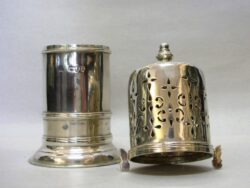 it has a bit more of the inherent molasses than Demerara, and the crystals are slightly smaller.
it has a bit more of the inherent molasses than Demerara, and the crystals are slightly smaller.
Golden Castor (also spelled Caster) Sugar is a type I have found only in the UK. It actually can be made from either beet or cane sugar, and it has some molasses either added to it or retained in the milling process like Muscovado sugar. It has a consistency similar to our white superfine sugar in the US, and thus creams more easily with butter for cake batters and cookie doughs. The name may have come from the name of a mill used in grinding sugar or from a type of shaker used in the 18th and 19th century for sprinkling sugar into coffee and tea.
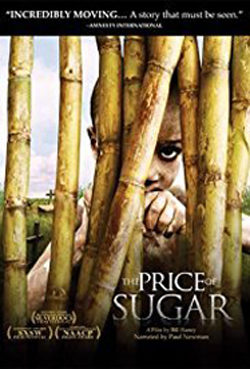 The production of Muscovado sugar can be traced back to Northern
The production of Muscovado sugar can be traced back to Northern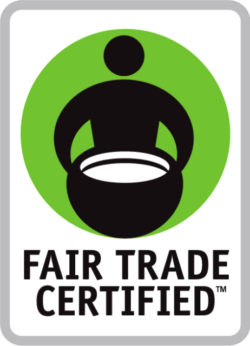 India in 1000BC. But sugar’s widespread production throughout tropical areas from the Pacific Ocean to the Caribbean was critical to English, Portuguese, Spanish, Dutch and French empires from the 15th through the 19th century. In fact the name Muscovado is a derivation of both the Spanish and Portuguese terms for unrefined sugar – azúcar mascabado and açúcar mascavado. Even
India in 1000BC. But sugar’s widespread production throughout tropical areas from the Pacific Ocean to the Caribbean was critical to English, Portuguese, Spanish, Dutch and French empires from the 15th through the 19th century. In fact the name Muscovado is a derivation of both the Spanish and Portuguese terms for unrefined sugar – azúcar mascabado and açúcar mascavado. Even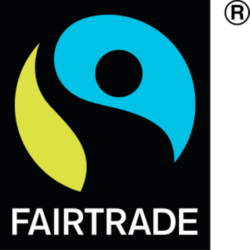 the most cursory reading of Wikipedia will give you at least a glimpse of its sordid history. In case you think the slave trade in the sugar industry has disappeared, take a look at the documentary The Price Of Sugar. It exposes why we as consumers should take the time to read the fine print on the sugar we buy, seeking a fair trade certification. According to their respective websites, both India Tree and Tate & Lyle adhere to those guidelines.
the most cursory reading of Wikipedia will give you at least a glimpse of its sordid history. In case you think the slave trade in the sugar industry has disappeared, take a look at the documentary The Price Of Sugar. It exposes why we as consumers should take the time to read the fine print on the sugar we buy, seeking a fair trade certification. According to their respective websites, both India Tree and Tate & Lyle adhere to those guidelines.
Shop the Post
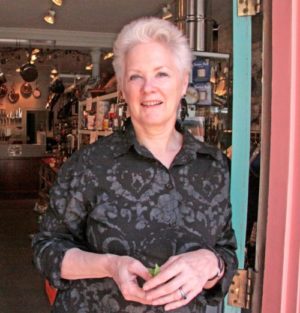
Kitchen Detail shares under the radar recipes, explores the art of cooking, the stories behind food, and the tools that bring it all together, while uncovering the social, political, and environmental truths that shape our culinary world.

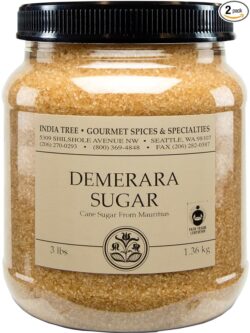

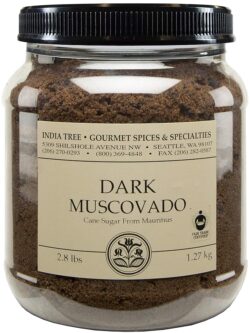
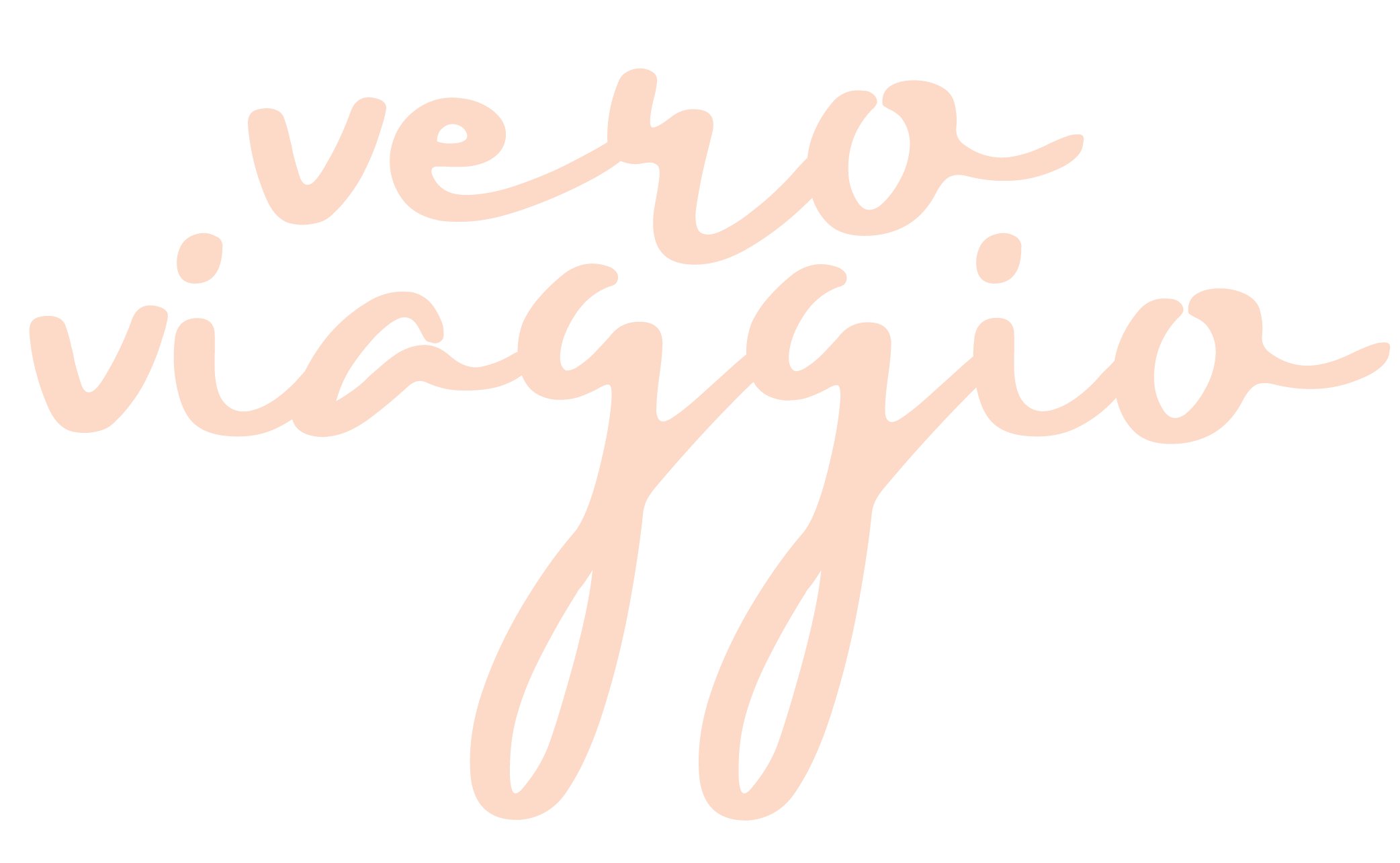



C&H sugar, widely available in the Western United States, has historically had retained rather than added molasses. They were messing with the formula last year and I am sure I am not the only one who complained.
It seems to have returned to the previous standard.
Hi Catherine,
While I was looking up Muscovado history and sources, I did run across the C&H brown sugar stories. I think that when the parent company of Domino bought C&H, that was when they tried to make the the transition. I am heartened that it backfired!
Nancy